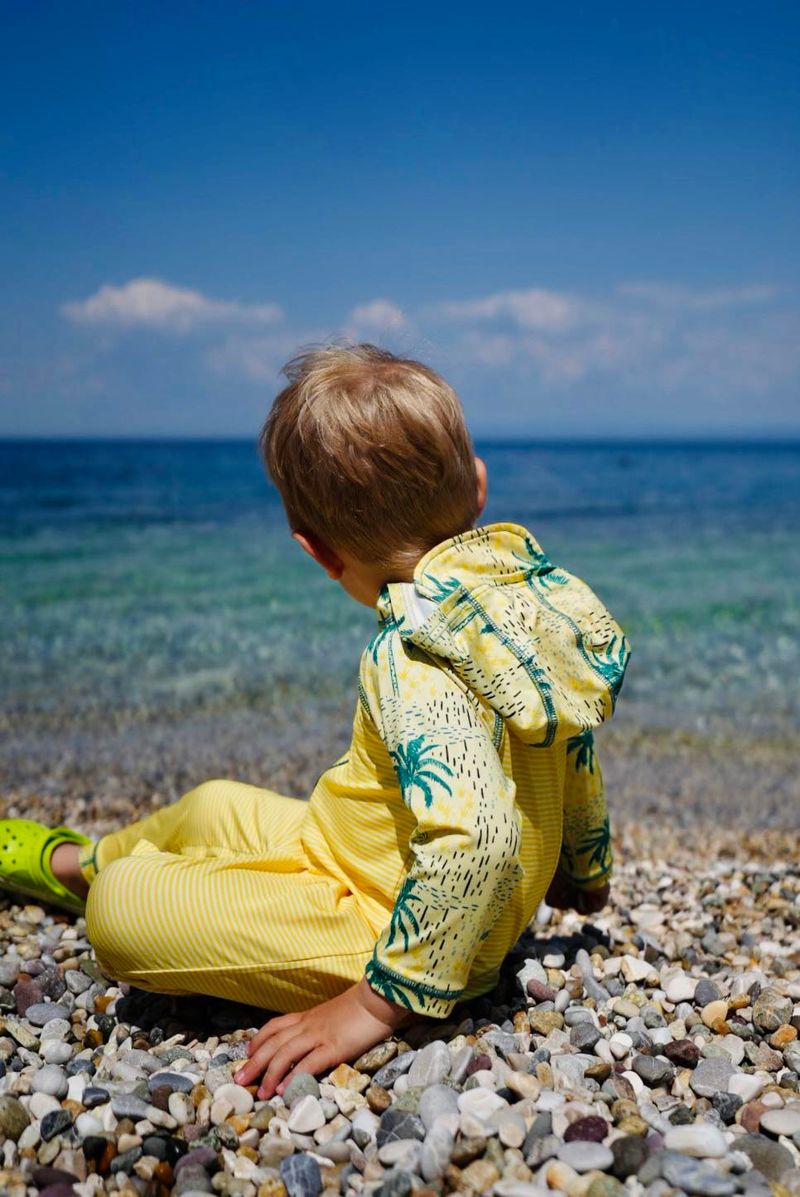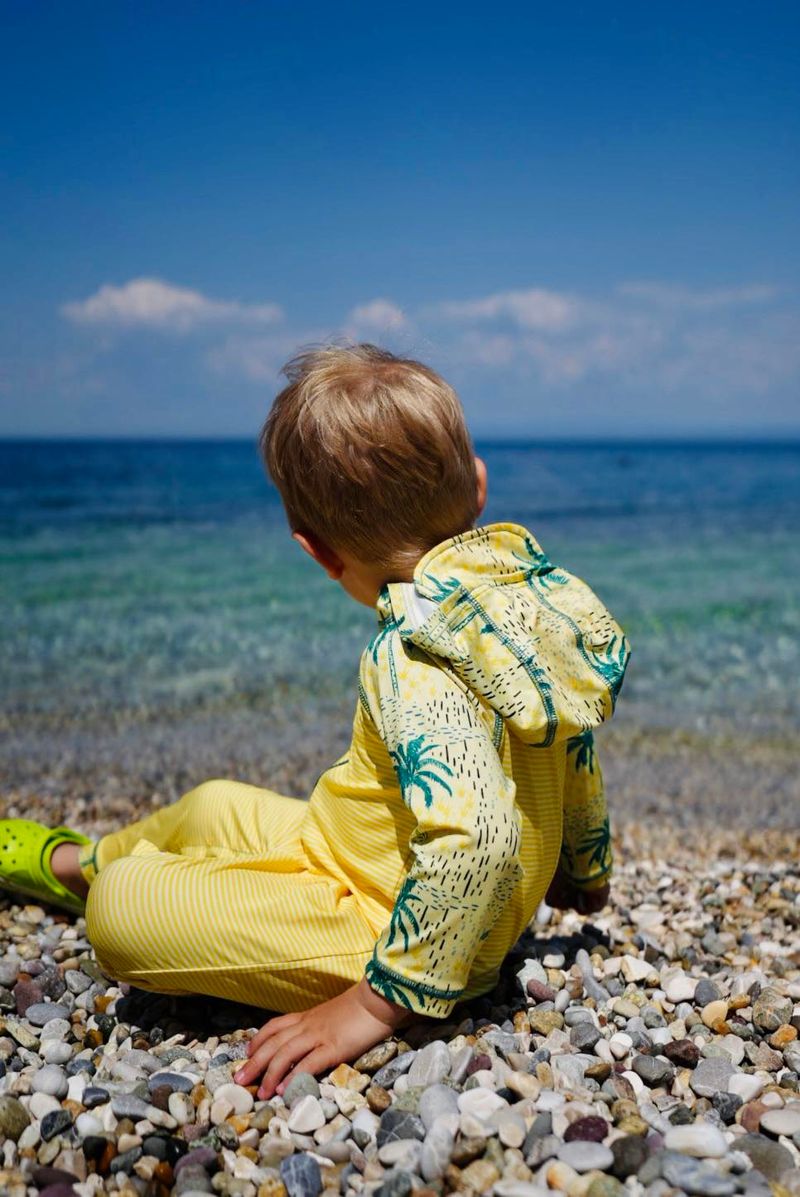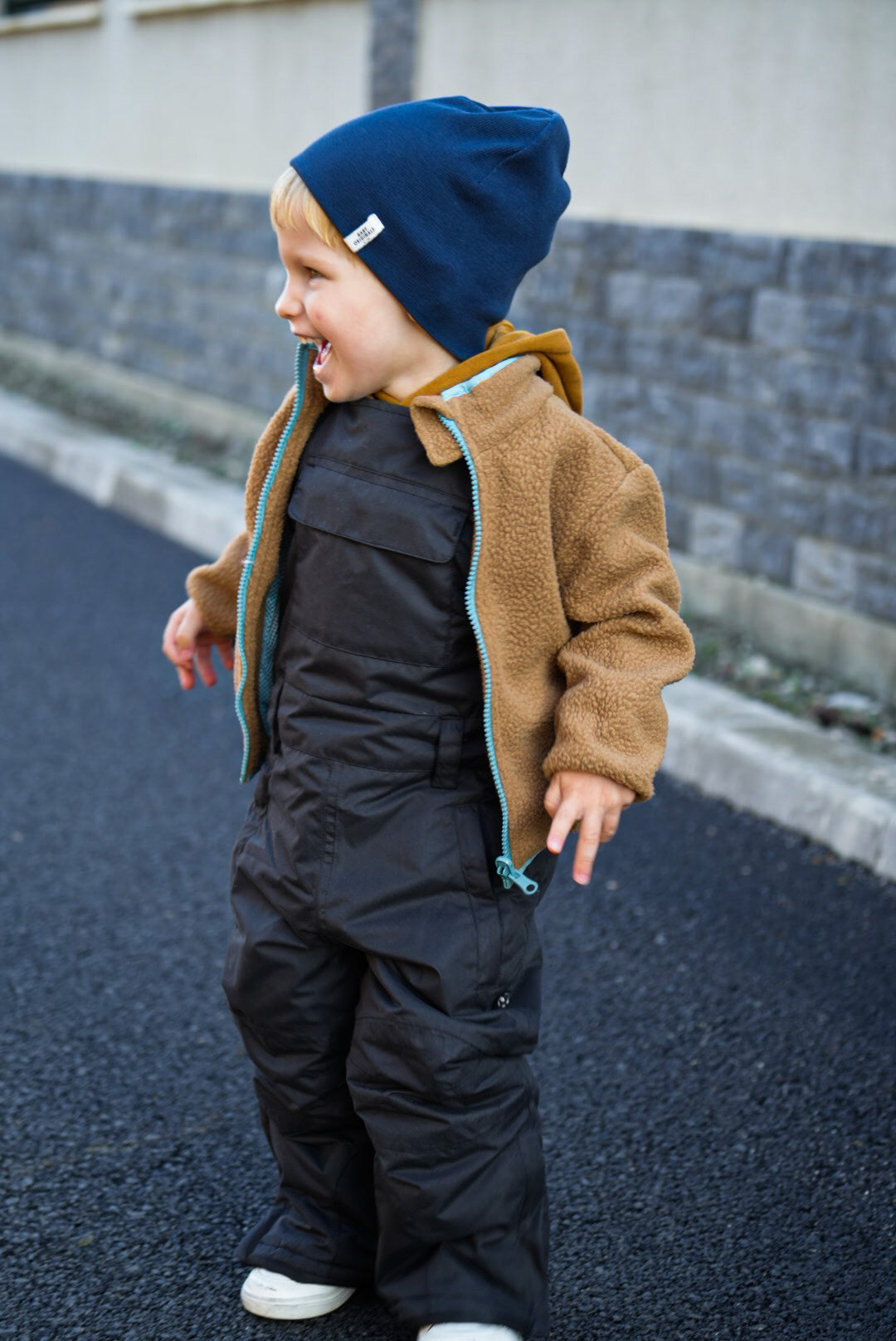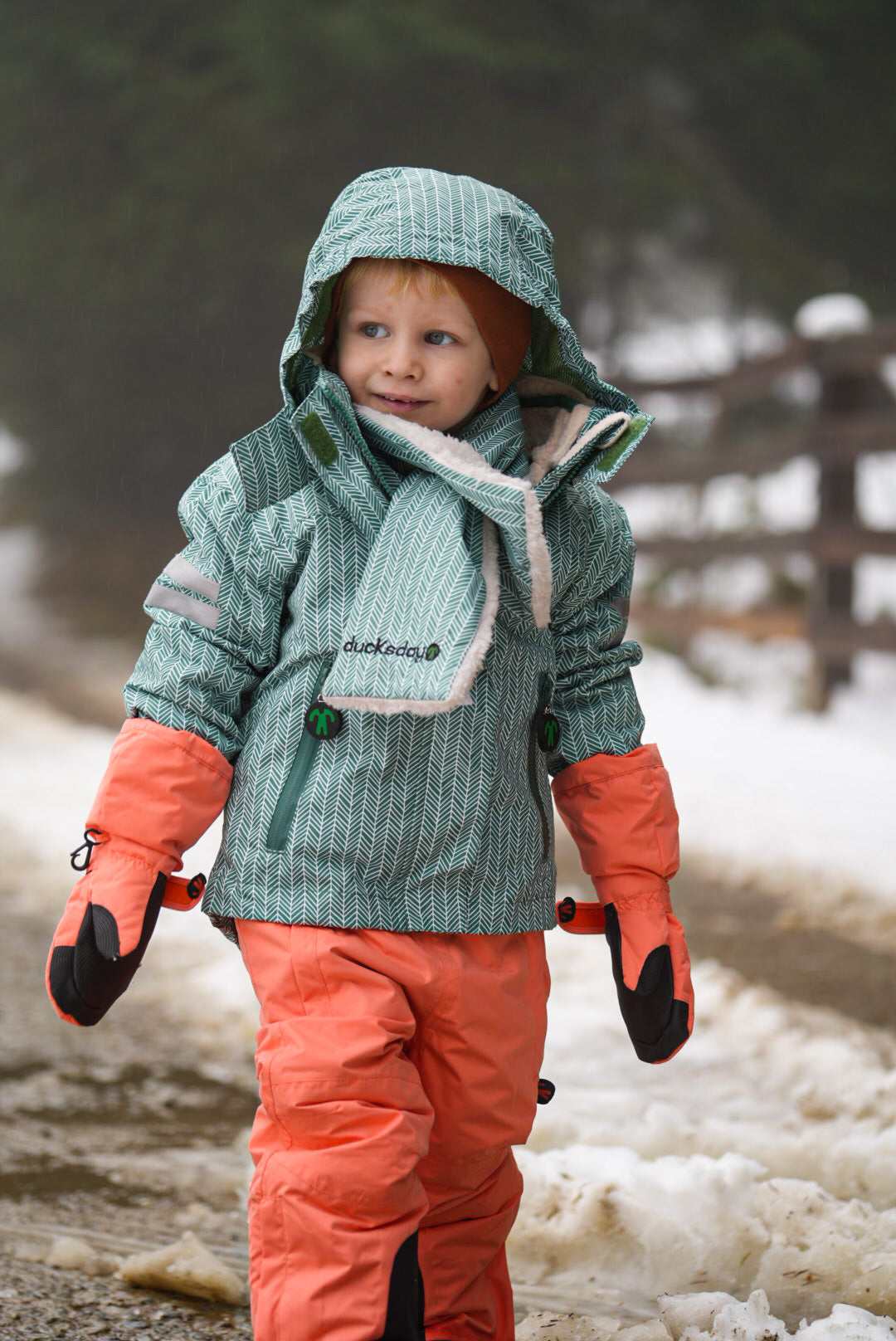But with so many options, it can be overwhelming. This guide will help you choose the best swimwear for your kids, with tips on fit, fabric, sun protection, and more.
1. A swimsuit that fits
The most important thing when choosing a swimsuit for your child is making sure it fits properly. The bathing suit should not slip off or be too loose. That can be dangerous and ruin your child's fun while playing at the beach or in the pool. Make sure that the bottoms aren’t so loose that they might come off easily while going down a slide. Take your child’s measurements to ensure a comfortable and secure fit. Measure under the arms around the bust, waistline, hips, and height.
2. Chlorine-resistant fabrics
Look for swimwear made of quality materials, which are durable and retain their shape over time. Polyester lining adds comfort and freedom of movement. Our Ducksday swimwear is quick-drying, breathable, very comfortable to wear and resistant to chlorine, saltwater, and UV rays. It is even STANDARD 100 by OEKO-TEX Certified, Class 1, which means it is free from harmful substances.
3. UV resistant swimwear
Did you know that sun burn at a young age doubles the changes of developing skin cancer later in life? That means it is very important to protect your baby and toddler from the sun. The best way to do so, is to use sunscreen at least every 2 hours, stay out of the sun in the afternoon, use sunscreen with at least factor 30 and wear protective clothing.
All of our Ducksday swimwear has UPF 50+ protection. Our swimwear keeps your kids safe from the sun while they are having fun on the beach. That means your kids only need sunscreen for body parts that are exposed to the sun, as the fabric protects their sensitive skin. Most of our UV protective items are multifunctional and not only swimwear. You can wear them to practice sports, to go hiking or even use them as a base layer for skiing thanks to the high breathability and quick-dry material.
Ultraviolet Protection Factor ratings are used to measure the amount of sun protection a fabric provides. Below is a chart that explains the amount of UV rays blocked and the amount of sun protection provided.
|
UPF Rating |
Amount of Protection |
UV Blocked |
|
15-24 |
Good |
93.3-95.9% |
|
25-39 |
Very Good |
96-97.4% |
|
40-49 |
Excellent |
97.5-98% |
You can add a matching sun hat and a pair of sunglasses to give extra protection to their eyes, head, neck and face. For young children, hats with chin straps prevent the hat from falling off or being pulled off. The glare from the ocean and the sand at the beach is intense and can damage their eyes if they are constantly exposed to it.
Putting a regular T-shirt over a swimsuit offers no protection from the sun when it gets wet. The best option is a swim shirt with long or short sleeves or a long lycrasuit. Compared to plain t-shirts, they dry quickly and are better for both safety and sanitary purposes. It has a better fit and is much easier for your child to move about in the water with than a baggy shirt.
4. Bright colors and prints
The color of your child’s bathing suit may be more important than you realize. Whether or not it can be immediately seen if your child goes underwater could save their life, and it has a lot to do with color.
Your best choice is with bright and contrasting suit colors. Just like a brightly colored outfit can help you find your child in a crowd, bright visibility is crucial to identifying a child in a body of water. Look for color blocks or pair contrasting colors when combining a swim shirt with bottoms and trunks. Have a look at our Ducksday summer collection with bright colors and patterns that stand out!
Are you ready for those long summer days with your family? Take a look at our colorful summer collection with lycrasuits, bucket hats, tankinis, board shorts, swimsuits, swim shirts and trunks. All with UPF50+ protection, quick-dry and chlorine proof!





